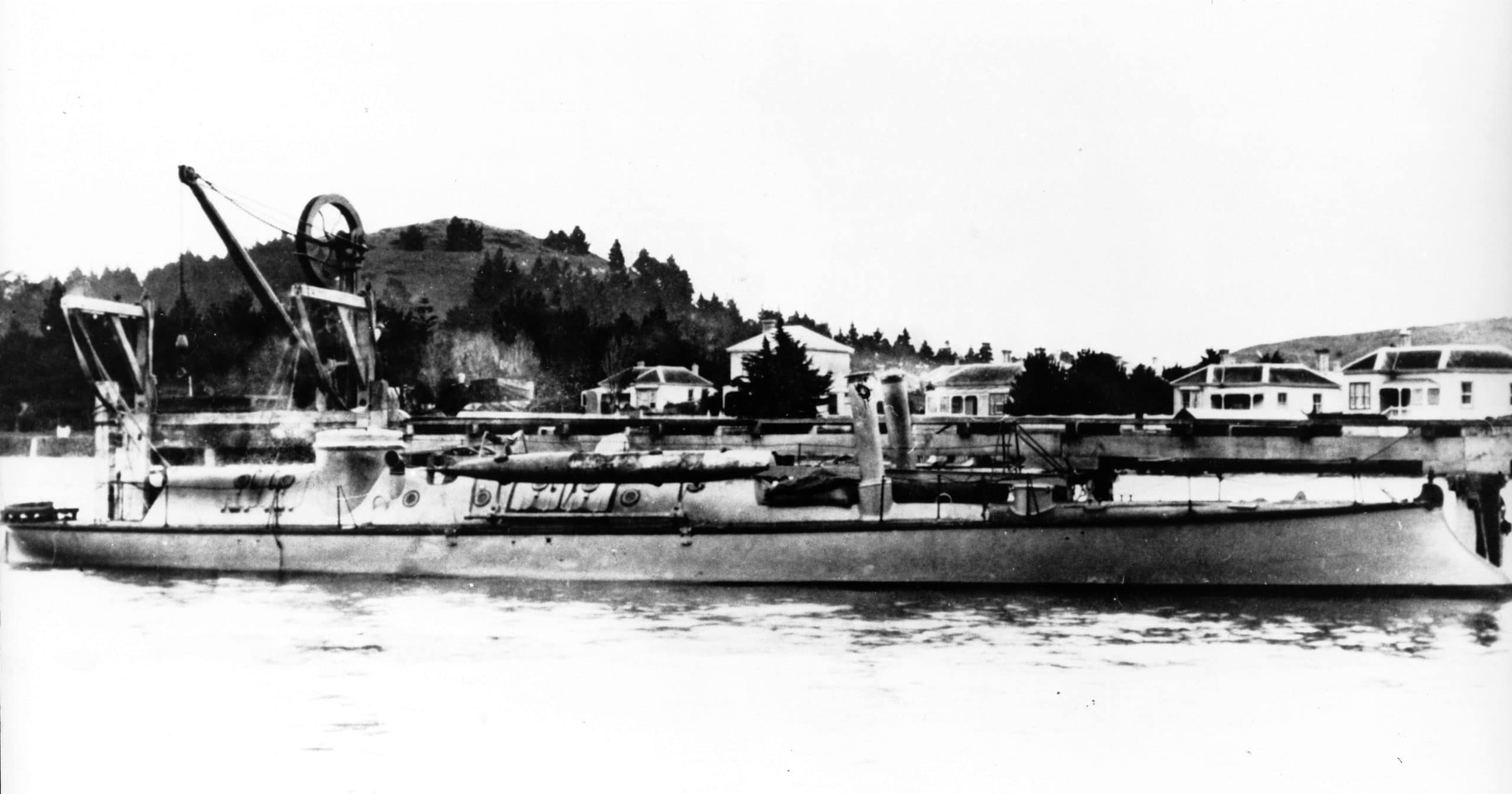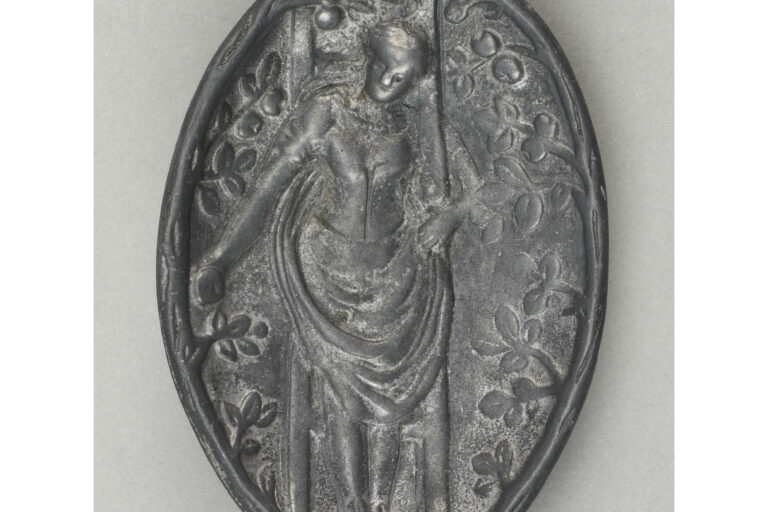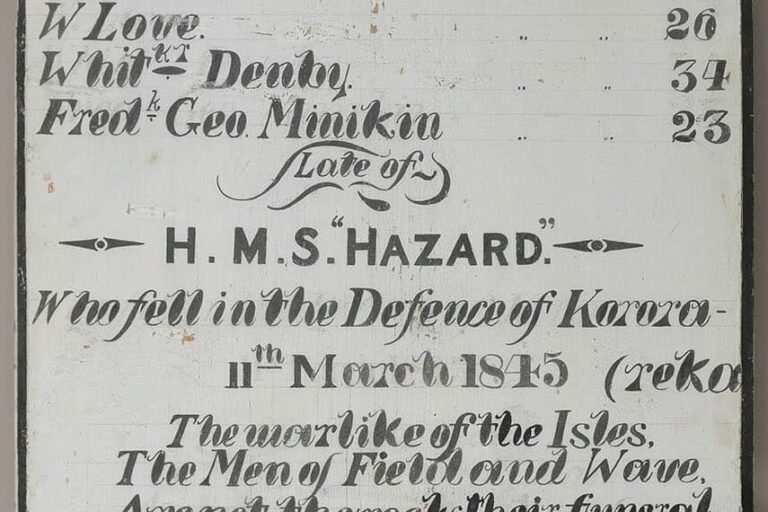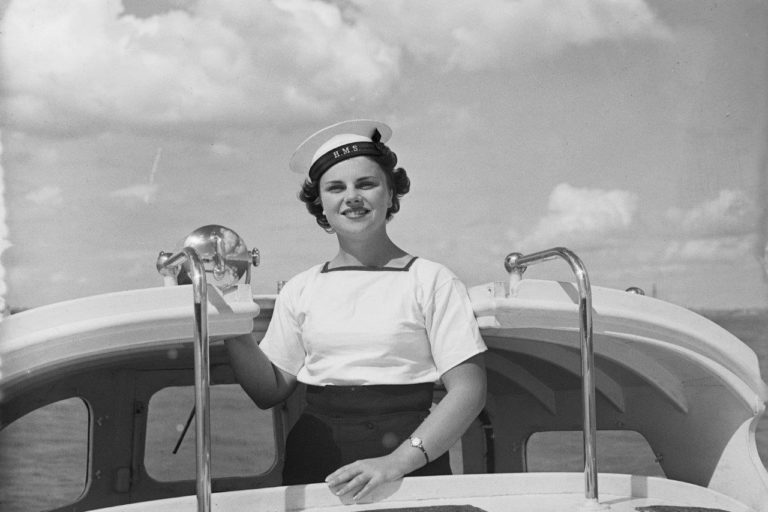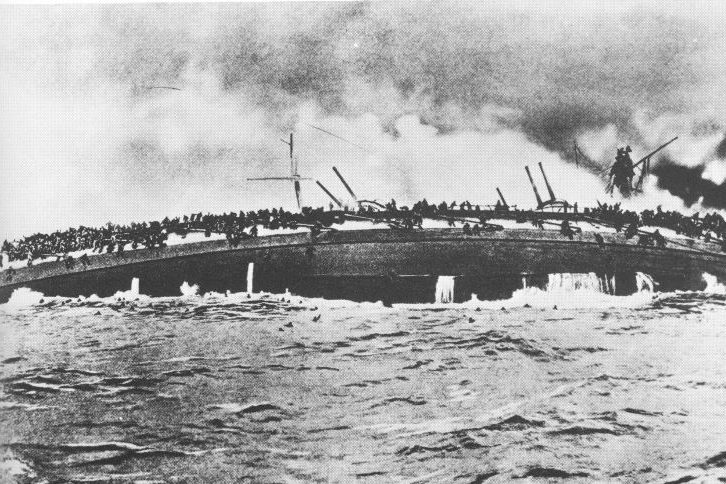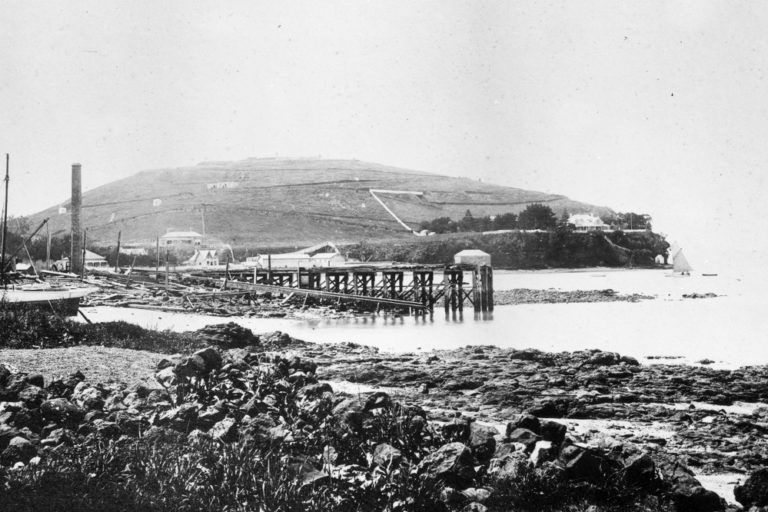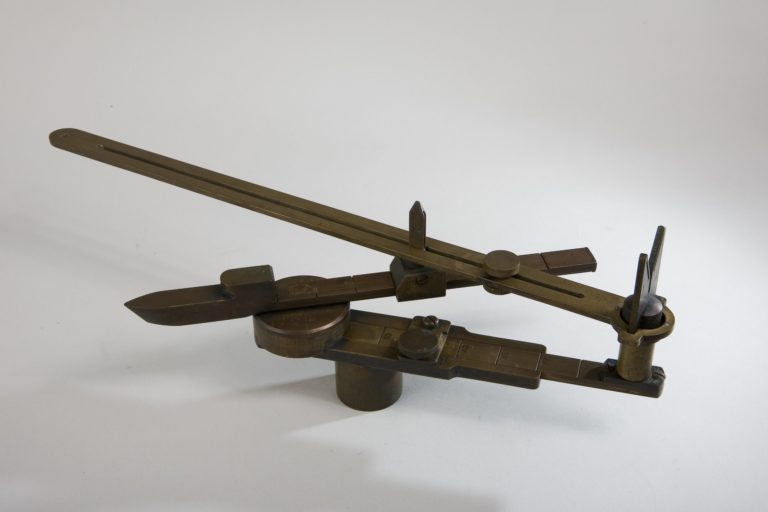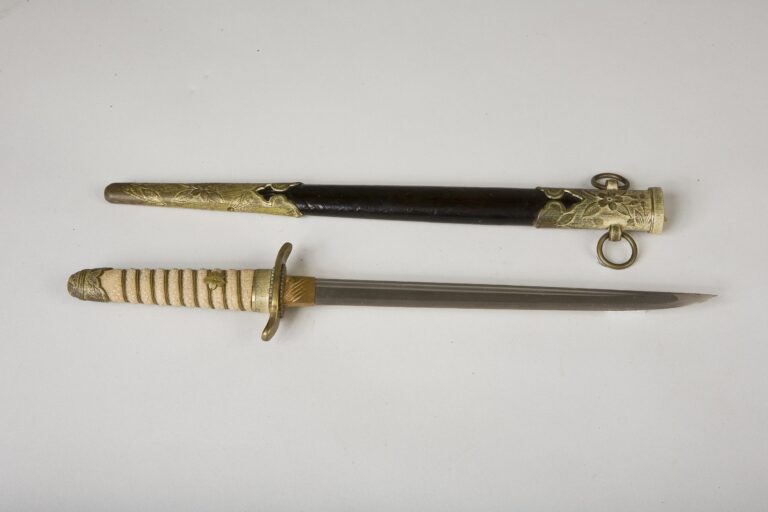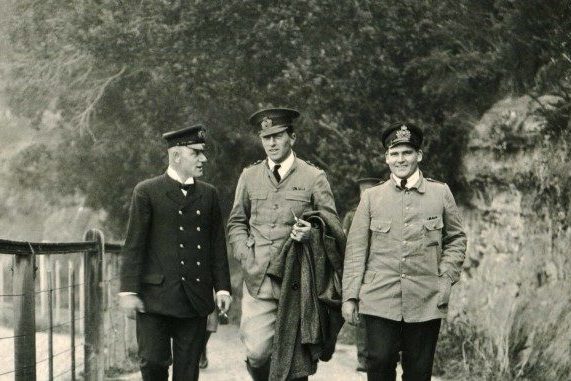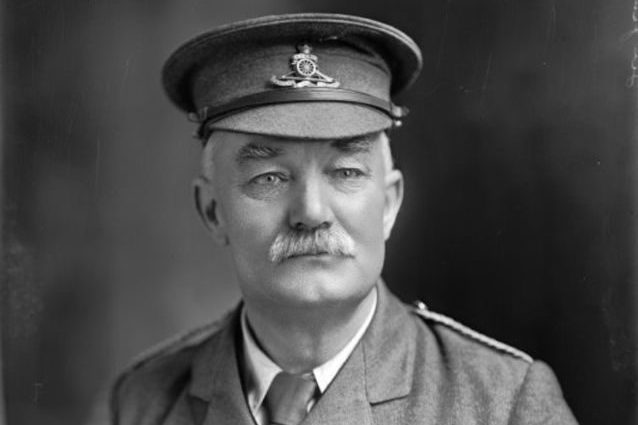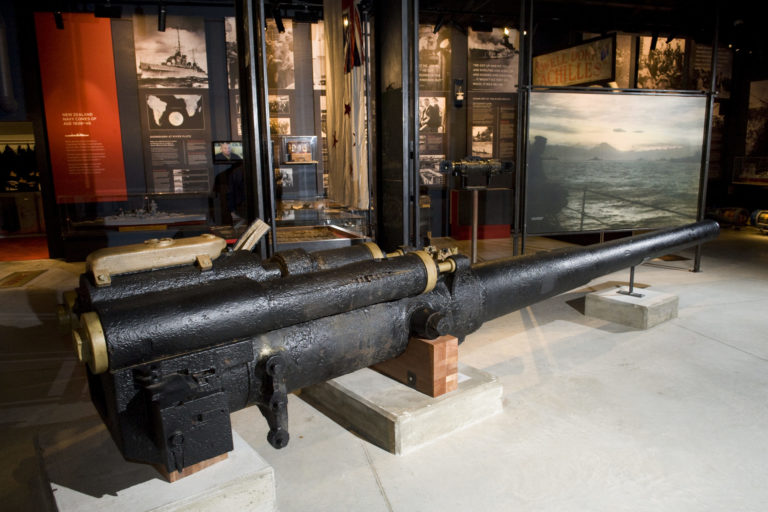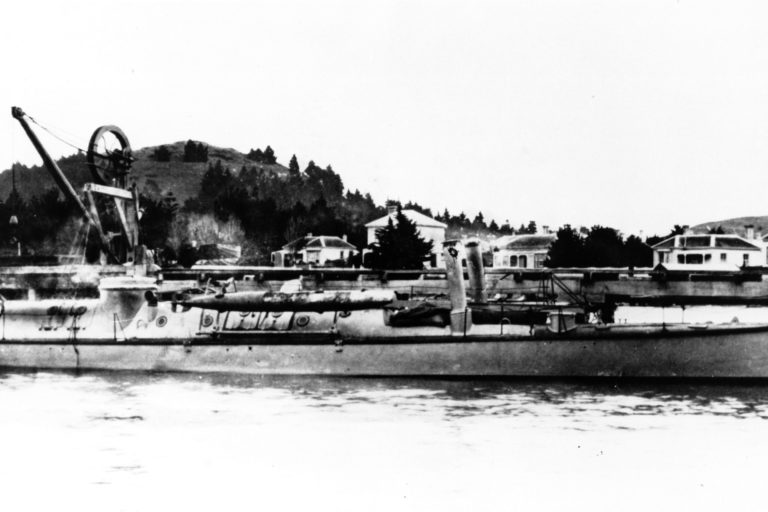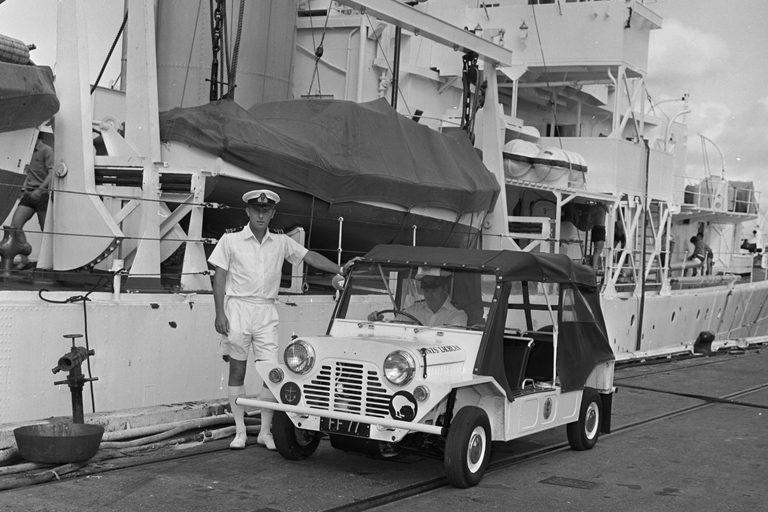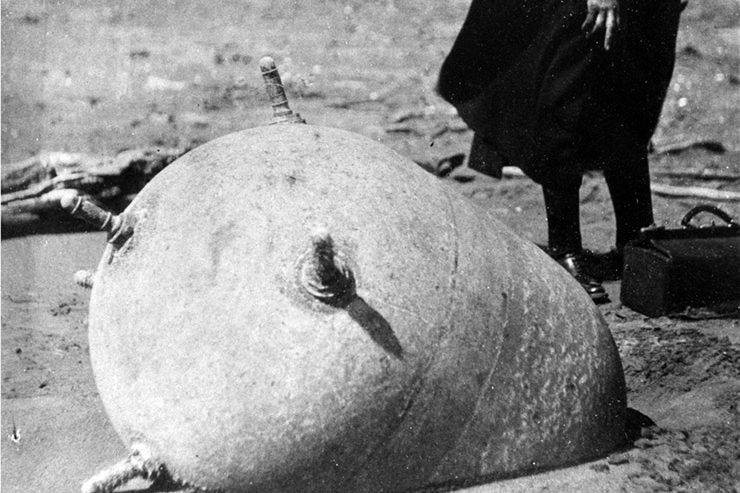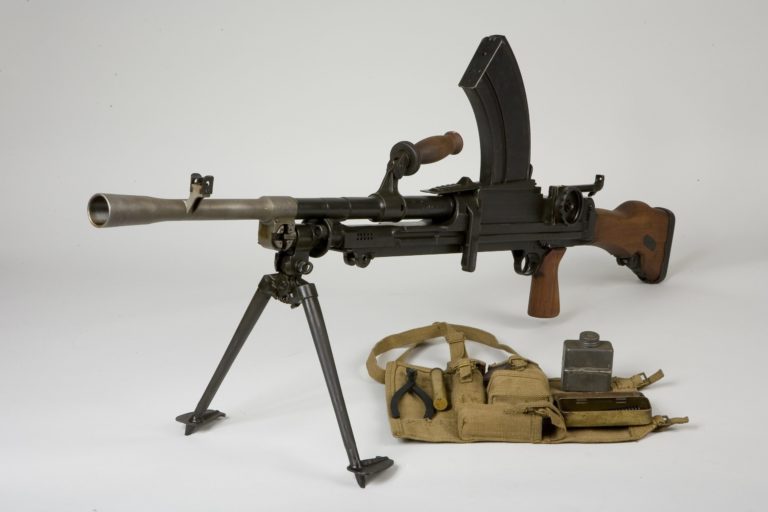History
One of the most popular places to view the city of Auckland is from the volcanic cone of North Head on the city’s North Shore, but many of its visitors are surprised at the superbly preserved, 8-inch disappearing gun located on the south side of the summit, gun No. 4951 built by Sir W.G. Armstrong in 1886, mounted ‘en barbette’, on a platform firing over an earth parapet and recoiling or ‘disappearing’ into a pit to enable re-loading with safety from enemy fire.
This 8-inch Armstrong gun is one of the few remaining of this type anywhere in the world and it remains today as a very physical and tangible reminder of another time when New Zealand was first concerned to meet the threat of foreign intrusion from over the horizon.
During these early years, New Zealand was made complacent about its defence by its status as part of the powerful British Empire and benignly took for granted that Britain and the Royal Navy would sail to meet any challenge that their infant colony might face. After the withdrawal of the Imperial troops in 1870, concern began to focus not only on direct threats to New Zealand’s coast but also to its wider aspirations in the south-west Pacific.
The possibility of Russian intervention in the South Pacific that had existed since the Crimean War was now complicated by the growing threat of British rivalry with the United States in the region consequent upon the British alliance with Japan.
The growing imperialist ambitions of the French and Germans in the region further threatened the colony’s assumption of the southwest Pacific as an “Australasian Sea”.
For the first time New Zealand began to appreciate that the security of its isolation had a down-side and that there was a fundamental flaw in its traditional reliance on the Royal Navy. The apparent protection offered by the Australian Squadron which had been based in Sydney since 1848 was made inadequate by both its lack of strength and its disposition.
Time for action
Successive New Zealand governments determined to address the issue of the colony’s vulnerability to foreign aggression, particularly in view of the growing frequency of Russian war scares during the 1870s.
It was felt that if New Zealand made some effort to defend itself then the Royal Navy might be more freely forthcoming in an emergency.
New Zealand’s first harbour defences began in Auckland in 1854 with the construction of Fort Britomart[1], not only to provide more effective local defence but also as a safe haven for Royal Navy ships.
The 1858 Militia Act set up citizen militia units, part of which were the Naval Artillery Volunteers or Navals who were to be responsible for guarding the coast. Effective defence from an external threat was then further assured by a financial contribution to the Royal Navy’s Australia Squadron in 1887 which ensured a permanent cruiser presence in New Zealand waters.
When Britain and Russia found themselves on the brink of war in early 1878, New Zealand was warned by Britain to act at once to meet the danger of unexpected attack.
Twenty-two 64-pounder guns were promptly ordered from Britain. But no sooner had they arrived than the scare abated and the familiar pattern of procrastination reasserted itself.
Despite the lull in tensions, Colonel Peter Scratchley, assistant to Sir W.D.F Jervois, Governor of South Australia and an acknowledged expert on colonial defence issues was invited to advise on the disposition of the new guns in 1880 with the warning that recommendations which cost too much would not be accepted.
Scratchley favoured mounting the guns at harbour entrances supplemented by minefields and spar torpedo boats. North Head was to be the focus of Auckland’s defences with the same pattern to be duplicated in Wellington, Lyttelton and Otago Harbours.
Despite generally endorsing Scratchley’s recommendations the government again hesitated to take action in view of the colony’s deteriorating finances and the new guns were put into storage. As Ian McGibbon comments, the acquisition of guns represented a major advance towards the development of a harbour defence system for the colony.
The catalyst for further action was the appointment of Jervois as the Governor of New Zealand in late 1883, followed soon after by the biggest Russian war-scare in the colony’s history in early 1885.
Major Henry Cautley Royal Engineers arrived in New Zealand, having been seconded from the War Office. He set about preparing plans for the defence of the main ports.
Cautley saw Auckland as a high priority and he proposed three batteries on Maungauika – North Head and a minefield and depot to operate from below the head [now Torpedo Bay]. Cautley also recognised the importance of Takuranga – Mount Victoria and Takapuna Head as positions for heavy guns.
The Armed Constabulary were important, along with naval artillery volunteers, in establishing the nucleus of troops to man these artillery positions.
No sooner had Jervois and Cautley’s[2] extensive revision of Scratchley’s recommendations been completed, than the Russians occupied Pendjeh in Afghanistan in 1885, an action that suggested further Russian advance towards British India.
Most of New Zealand seemed to consider raids inevitable and such was the public panic that it would have been political suicide for the Government not to have taken immediate action.
Modern heavy guns were promptly ordered from London including thirteen 6-inch and ten 8-inch breech-loaders and twenty quick-firing guns.
Tenders were quickly called to set up one of the stored 64-pounders on North Head in Auckland. Mines were readied in support of the gun emplacements now being hastily constructed in all the major harbours according to the Jervois scheme and under the guidance of Cautley.
The war-scare also encouraged the Government to consider sending a thousand-man force to Afghanistan in support of the Empire, an action forestalled by the passing of the immediate danger of war with the Anglo-Russian agreement to settle the Pendjeh issue by arbitration.
Completion of the Defence System
Despite the passing of the 1885 war-scare, Stout’s government resolved to complete Jervois’s scheme as soon as possible.
Major Cautley returned home in June 1885 and was replaced by Major E.M. Tudor Boddam who became Engineer for Defences.
Much of the work, now visible on North Head dates from this time, was undertaken by Major Boddam, Arthur Bell [a later Engineer for Defences] and Mr. Frankham as Inspector of Works.
The 1885 works had been built in haste and provided at best a rudimentary defence system. With the new guns on order the government felt committed to the fortifications.
They would provide a degree of reassurance in the event of another crisis, they would provide work for the swelling ranks of unemployed created by the deepening depression striking the country and so the necessary cash to complete the defences was passed by a large majority in the Parliament early in 1886.
The task of redesigning and constructing the new positions was given to Major Tudor Boddam and resulted in a much more sophisticated defence system than that thrown up in 1885.
Boddam was most concerned to develop the mine defences which had received scant treatment in 1885, so a new system was devised, new equipment imported from Britain and all the necessary sheds and slips were built.
The Mine Store in Torpedo Bay at the foot of North Head, the base for strings of mines to be run across the harbour to Bastion Point, was completed in 1886.
The value of spar torpedo boats was also revisited as their poor sea keeping qualities made them hazardous when dropping Whitehead torpedoes in anything but calm conditions.
So the existing boats were dropped from the defence plan and broken up in the early 1900s.
During 1887, the impetus to complete the plan began to wane once again.
New Zealand was sliding into economic depression and the wisdom of further spending was questioned especially after the signing of the Australasian Naval Agreement assured the stationing of two cruisers in New Zealand waters which reduced the urgency to complete the defence works.
Nevertheless Premier Atkinson, no doubt influenced by Governor Jervois, determined to pour the decreasing defence budget into completion of the harbour defence system in an effort to prevent the waste of money already spent.
Major-General J. Schaw was and Arthur Bell, the civilian Engineer for Defence, set about completion of the defence works in the face of a declining defence budget.
Over 200 prisoners were employed in the main harbours to quarry stone, collect sand for masonry and concrete and work the varied machinery.
The custom built stone barracks for 40 prisoners still stands today as the oldest building on North Head. In this way Bell had virtually completed the original Jervois scheme by the time the Atkinson Government fell from office in 1891.
Fort Takapuna and Fort Cautley on North head were completed, the 8-inch Armstrong gun in the South Battery stamped with the name Arthur Bell, 16-2-1889 as a testament to the date of its emplacement.
The forts in Wellington and Lyttelton were completed whilst Dunedin’s defences awaited only the completion of a battery at Harrington Point to cover the entrance to the harbour.
When Captain A.W. Moore, a visiting British naval officer, commented most favourably on the defence works in March 1891, New Zealand had spent more than £416,000 on harbour defences since the 1885 war scare which was close to Jervois’s original estimate.
£191,000 had been spent on materials, £190,000 on the works and £34,000 on the purchase of sites.
The Liberal Governments of Balance and Seddon listened patiently to a range of divergent opinion on the viability of the harbour defences throughout the 1890s, confident in the suspicion that a definitive assessment of New Zealand’s defence requirements was elusive.
A succession of Commanding Officers of the New Zealand Forces offered differing opinions and solutions as was clearly the case in 1896 when Colonel A.P. Penton’s views were conspicuously at odds with those of Lieutenant Colonel F.J. Fox in 1893.
But such divergence served well the purpose of successive governments as they enabled them to settle for minor modifications at minimal cost content that the defences as they stood would provide an adequate deterrent against foreign incursion into New Zealand.
The harbour defences built in the 1880s were state of the art for the time but some of the equipment never became fully operational and none of the guns ever fired a shot in anger.
But as our most eminent military historian, Ian McGibbon explains, “The very existence of these defences provided a deterrent against intrusion by an enemy ship and more importantly, a reassurance to the public of the time that such an intrusion would be resisted.”
Fort Victoria – Mt Victoria [3]
As early as 1842, Mt Victoria in Devonport was used a naval signal station with a flagstaff on its summit for guidance and direction of the Royal Navy’s vessels of the Australian Squadron visiting New Zealand.
Governor Jervois considered that this hill would be the heart of the defences on the north shore of the Waitemata Harbour, a base-redoubt for infantry whose task was to prevent the forts at North Head and Point Takapuna being taken in the rear by an enemy landing party.
The first fortifications were constructed during the 1885 scare when four 64-pdr rifled muzzle loaders purchased and supplied from Australia were deployed on the north side of the summit and some earthworks begun.
These were supplied by the Admiralty and are believed to have come from HMS Nelson.[4] These guns were decommissioned in 1891.[5]
No further work was begun until 1899 when the 8-inch breachloading disappearing gun was mounted on the west side of the summit.
This was a unique battery design found only at Point Haswell in Wellington and remains as one of the three still mounted in New Zealand.
In the 1890s, it was planned to emplace an 8-inch gun and 6-pdr QF gun on Stokes Point, now the northern approach to the Harbour Bridge in conjunction with a possible minefield across to Ponsonby Point on the south side to ensure protection of the inner Waitemata Harbour.
In 1896 an 8-inch gun was placed at Stokes Point but the project was discontinued and the gun moved back to Mt Victoria and mounted there in 1899.
It was brought across the harbour to Devonport wharf, offloaded and taken to the base of the hill.
The thirteen ton gun was then hauled to the summit up a rope tramway. It was then mounted by block and tackle in the emplacement.[6]
It is believed to have only been fired once upon installation. The broken windows and the outrage from local residents prevent any further firing. The gun was not manned during the First World War.[7]
In 1925, the New Zealand Army handed over the site over the New Zealand Division of the Royal Navy for use as an ammunition depot.
At this time the gun pit and gun were filled in with volcanic scoria.[8] When the issue of ownership of land was raised in 1928 it was found that Mt Victoria had never been formally acquired by the Defence Department in the 19th century and remained a public reserve administered by the Devonport Borough Council during its military occupation. It is now under the Auckland Council’s control.
In the 1970s, the local residents began to petition for the gun to be restored. The gun was unearthed in 1975 and by 2005 was restored & installed in its emplacement.[9]
Sources:
Cooke, Peter, Maxwell, Ian, Great Guns: The Artillery Heritage of New Zealand, Wellington: Defence of NZ Study Group, 2013.
Glackin, Russell, In Defence of Our Land: A Tour of New Zealand’s Historic Harbour Forts, Auckland: Penguin Books, 2009.
_____________, ‘New Zealand and Imperial Defence: The Development of New Zealand’s Strategic Attitudes, 1870-1893’, MA Thesis, Christchurch: University of Canterbury, 1966.
Ian McGibbon, The Pathway to Gallipoli: Defending New Zealand 1840-1915, Wellington: GP Books, 1991.
[1] Fort Britomart was located in the area of the confluence of Fort St. and Britomart Pl. in modern downtown Auckland and gives its name to the city’s new railway station.
[2] Jervois is remembered today on Jervois Quay in Wellington whilst his assistant, Maj. Henry Cautley gave his name to Fort Cautley on North Head.
[3] Russel Glackin, In Defence of Our Land: A Tour of New Zealand’s Historic Harbour Forts, Auckland: Penguin Books, 2009, p. 43.
[4] Peter Cooke, Ian Maxwell, Great Guns: The Artillery Heritage of New Zealand, Wellington: Defence of NZ Study Group, 2013, p. 250.
[5] Two of these guns are now mounted outside the Wardroom at HMNZS Philomel. Peter Cooke, Ian Maxwell, Great Guns: The Artillery Heritage of New Zealand, Wellington: Defence of NZ Study Group, 2013, p. 127.
[6] Russel Glackin, In Defence of Our Land: A Tour of New Zealand’s Historic Harbour Forts, Auckland: Penguin Books, 2009, p. 44.
[7] Peter Cooke, Ian Maxwell, Great Guns: The Artillery Heritage of New Zealand, Wellington: Defence of NZ Study Group, 2013, p. 126.
[8] Peter Cooke, Ian Maxwell, Great Guns: The Artillery Heritage of New Zealand, Wellington: Defence of NZ Study Group, 2013, p. 126.
[9] Peter Cooke, Ian Maxwell, Great Guns: The Artillery Heritage of New Zealand, Wellington: Defence of NZ Study Group, 2013, p. 126.

